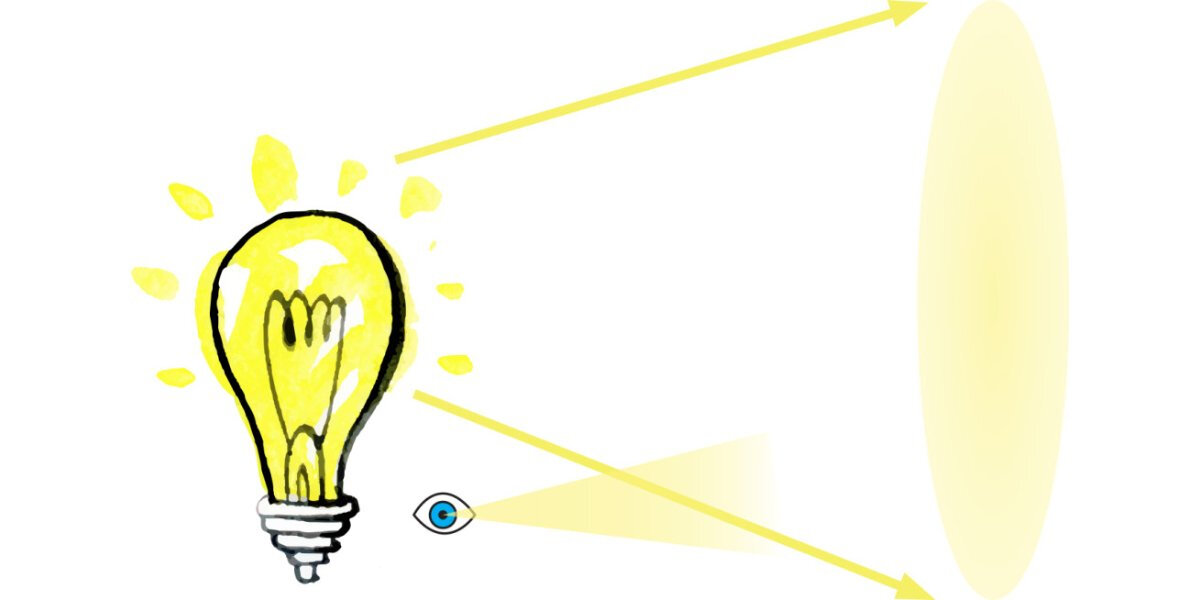The physical unit candela (cd) quantifies the luminous intensity, i.e. that part of the luminous flux that points in a certain direction. An analysis of the luminous intensity in relation to all directions can be modelled into a so-called luminous intensity distribution curve (LVK). Depending on the design of a luminaire or reflector lamp, the luminous intensity is distributed evenly or irregularly over a certain solid angle.
Why do you need candela?
Only in a few cases do manufacturers specify candela values, because these always refer to specific directions. They would therefore only be relevant for lamps that emit approximately the same luminous flux in all directions. Another physical quantity that informs the consumer about the properties of luminaires is the beam angle. The values for beam angle and lumens can be put into relation to compare different luminaires in terms of their luminous intensity in candela:
The larger the beam angle of a light source, the fewer candela are allotted to a steradian (solid angle) with the same lumen value.
The formula for candela
Definition: Luminous intensity (in candela or cd) = luminous flux/space angle





